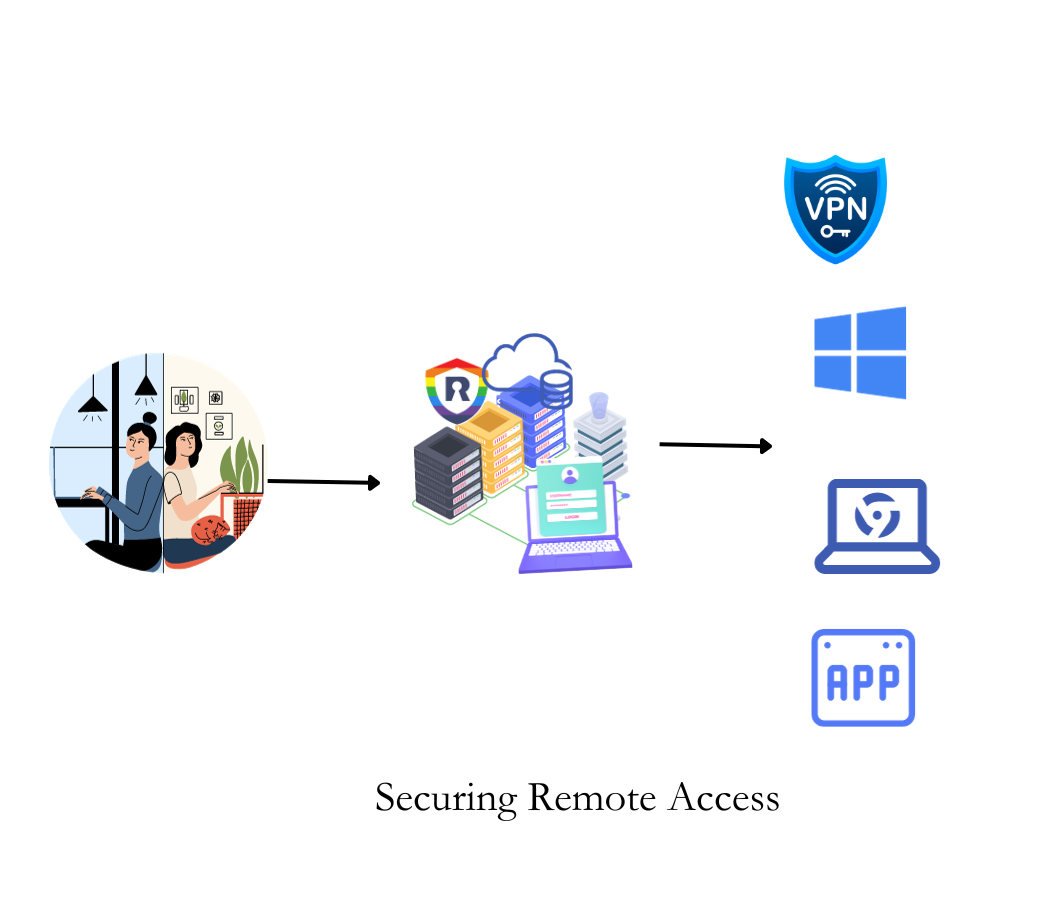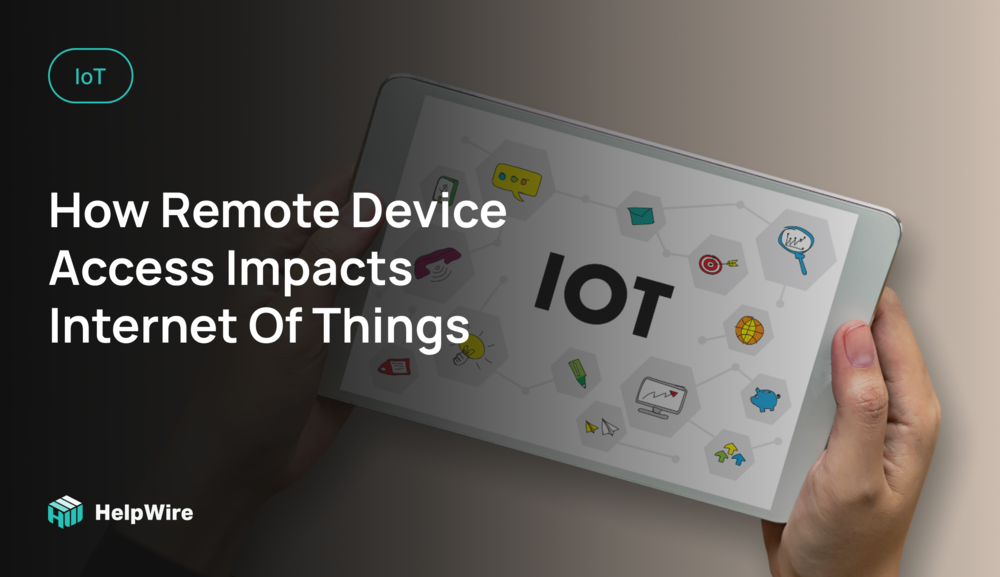Best SSH Remote IoT Device Access: Secure Solutions & Free Options
Are you struggling to keep your IoT devices secure and accessible from anywhere? The integration of Secure Shell (SSH) remote access solutions is the cornerstone of safeguarding your connections, ensuring data privacy, and streamlining device management in the rapidly expanding world of the Internet of Things (IoT).
From smart homes to intricate industrial automation setups, the ability to remotely access IoT devices is no longer a luxury; it's a necessity. It empowers both businesses and individuals, allowing them to stay connected and in control regardless of their physical location. This article aims to dissect the landscape of remote IoT device access solutions, highlighting their key features, discussing their benefits, and exploring practical applications to empower you in managing your connected devices with confidence.
The beauty of remote access, especially with SSH, lies in its versatility. It transcends the limitations of geographical boundaries, offering unprecedented control over your devices. Imagine being able to monitor your home security system while on vacation, or troubleshoot a critical piece of machinery in a remote factory without ever having to step foot onsite. This level of control is what drives the need for robust solutions. Platforms like RemoteIoT and similar services, are engineered to make it easier for businesses to scale and monitor device groups without the usual hassle. This translates to less downtime, improved performance, and a more secure system, vital in sectors like healthcare and manufacturing, where consistent data and reliable device functionality are paramount.
The growth of the Internet of Things (IoT) has been nothing short of exponential, transforming how we interact with the world around us. Every day, more devices are connected to the internet, generating and exchanging data at an unprecedented scale. In this interconnected world, the importance of secure remote access to these devices has never been greater. The best remote IoT device SSH solutions are the crucial tools that enable us to safely manage, monitor, and control these devices, ensuring data integrity and operational efficiency.
SSH, or Secure Shell, stands out as a particularly secure and reliable protocol for accessing IoT devices remotely. It provides a secure, encrypted channel for communication, protecting sensitive data from interception and ensuring that only authorized users can access the devices. This makes SSH an indispensable tool for anyone managing IoT devices, from individual hobbyists to large enterprises.
The convenience of accessing IoT devices remotely is evident in our daily lives and is further enhanced by the various benefits it offers. These benefits span a broad spectrum, from increased productivity and improved efficiency to enhanced security and reduced costs. Key reasons why remote access is valuable are numerous and can be further elaborated upon:
- Explore Alice Rosenblum On Onlyfans Photos Videos More
- Tickzoo Alternatives In 2025 Your Streaming Guide
- Enhanced Monitoring and Control: Remote access allows for continuous monitoring of device performance, providing real-time insights and the ability to control device functions from anywhere.
- Efficient Troubleshooting: When problems arise, remote access enables quick and efficient troubleshooting, often eliminating the need for on-site visits.
- Cost Reduction: By minimizing the need for on-site technical support, remote access helps reduce travel and labor costs associated with device management.
- Improved Security: Secure remote access protocols, like SSH, provide a secure channel for accessing devices, protecting against unauthorized access and data breaches.
- Increased Productivity: Remote access enables efficient device management, leading to increased productivity and reduced downtime.
Remote access to IoT devices offers a myriad of advantages and conveniences that enhance our daily lives and provide valuable functionalities, especially when combined with the power of SSH. In the modern world, IoT devices play a pivotal role in boosting both productivity and convenience, necessitating a secure method for accessing them. This is where SSH comes into play, and its implementation is not just a technical choice; its a strategic necessity. In today's interconnected world, the demand for remote access to IoT devices is growing rapidly.
This article aims to guide you through the best SSH remote IoT device options, including free solutions, thereby empowering you to manage your devices with confidence and security. Furthermore, well explore the best practices and tools for establishing SSH connections to IoT devices, providing insights and recommendations that you can act on immediately. The advantages are considerable, including enhanced security, cost reduction, and the ability to manage devices from virtually any location. These factors make the use of SSH in the realm of IoT devices not merely beneficial, but essential.
Many organizations rely on IoT devices for data collection and automation. As a result, ensuring secure communication between these devices is paramount. This is where the practical application of SSH connections becomes crucial. SSH provides a secure and reliable method for accessing and managing these devices over unsecured networks.
Accessing and managing devices deployed at remote sites often proves challenging, particularly when firewalls are in place that block all inbound traffic. Furthermore, troubleshooting devices can involve sending technicians onsite, which increases the complexity and cost of device management. The use of solutions, such as SSH tunnels, can provide a work around.
Consider the following scenario: You are managing a series of sensors deployed in a remote, industrial setting. These sensors gather critical environmental data. A potential breach could lead to data corruption or even sabotage. Proper implementation of SSH ensures that your data remains secure.
Setting up remote access for IoT devices involves several steps, which can vary based on the device and manufacturer. The core steps involve:
- Device Compatibility: Before anything else, verify that your IoT devices support remote access functionality.
- Network Configuration: Ensure that your devices are connected to a network and have a stable internet connection.
- SSH Server Setup: Configure an SSH server on your IoT device. This might involve installing an SSH server package.
- Firewall Configuration: Configure your firewall to allow SSH traffic.
- User Authentication: Create user accounts with strong passwords to secure access to your devices.
- Port Forwarding: Set up port forwarding on your router to redirect traffic from your public IP address to your IoT device.
- Testing: Once all configurations are done, test your setup to ensure you can connect remotely.
The fundamental principle of remote access is to enable the connection of devices from anywhere in the world, fostering a flexible and efficient way to manage them. Through tools like remote IoT web SSH, users can access and control their devices from any location, adding a seamless layer of management to the IoT ecosystem. The focus here is on security, enabling efficient management, whether in your smart home or across a sprawling industrial network.
Tracking and managing your IoT devices is essential to ensure the growth and security of your business. Remote IoT device management platforms make it easier to scale and monitor large groups of devices without a fuss. The tools, like those mentioned, allow you to keep an eye on devices 24/7, receive instant alerts for unusual activity or unauthorized access, and promptly address any device issues. This allows for a secure system, which is crucial for sectors like healthcare and manufacturing, where reliable data and device functionality are top priorities. The AWS IoT device management unit, for instance, lets you register devices for access by other modules, such as IoT Core for performance monitoring or IoT Device Defender for security monitoring.
Here are the best practices to keep your IoT devices secure and efficient:
- Keep an eye on your devices 24/7.
- Get alerts for unusual activity immediately.
- Set up instant alerts for unauthorized access or device issues.
- Act fast to fix problems.
- Always encrypt data during transmission.
- Use firewalls.
For those utilizing AWS services, the AWS IoT device management unit offers seamless integration and management. It is ideal for businesses that already use AWS.
Beyond the technicalities, the overarching goal is to establish a robust and secure remote access system that is both efficient and easy to manage. Its many features go beyond traditional screen sharing to include terminal access, app control, and edge management, offering a comprehensive solution to complex IoT management scenarios. This article seeks to provide the knowledge and tools necessary to navigate this landscape successfully.



Detail Author:
- Name : Buster Hudson
- Username : rjohnston
- Email : wyman.gabriel@yahoo.com
- Birthdate : 2001-03-06
- Address : 8878 Adah Light Suite 866 East Eldachester, NC 00252-6609
- Phone : (281) 769-4304
- Company : Wuckert-Moen
- Job : Agricultural Sales Representative
- Bio : Asperiores voluptates nobis magnam ut autem cum. Quo vel quos rerum.
Socials
instagram:
- url : https://instagram.com/ctorphy
- username : ctorphy
- bio : Rerum quibusdam aut in. Dolores dicta culpa vitae rerum omnis. Voluptatem enim qui ut quis.
- followers : 1391
- following : 664
facebook:
- url : https://facebook.com/candidotorphy
- username : candidotorphy
- bio : Impedit dolores illum non iure molestiae dolores.
- followers : 1893
- following : 704
twitter:
- url : https://twitter.com/torphy1992
- username : torphy1992
- bio : Iure voluptatem earum distinctio et. Voluptas et incidunt nisi esse aliquid quis.
- followers : 5270
- following : 2581
tiktok:
- url : https://tiktok.com/@candido2246
- username : candido2246
- bio : Illum reiciendis at sapiente magni enim.
- followers : 4777
- following : 2239